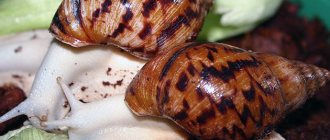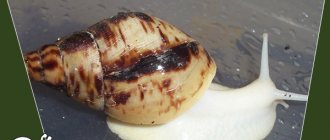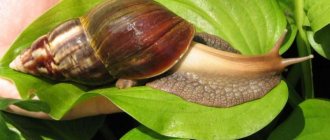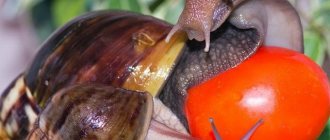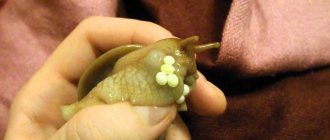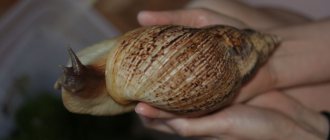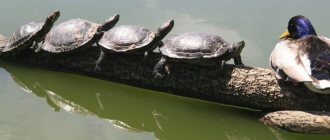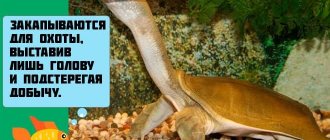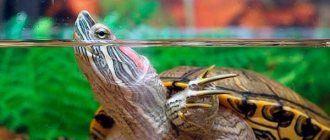Achatina Reticulata is a terrestrial mollusk that is very popular among snail breeders. Today, Achatina reticulata is one of the three unpretentious snails for keeping at home.
Firstly, they grow quickly, secondly, they are inexpensive, and thirdly, they are sociable and unpretentious animals. It is widely used in cosmetology, medicine and cooking.
Achatina Reticulata is sometimes called Achatina reticulata.
The snail received this name because of the color of its shell; brown spots, stripes and dots form an intricate mesh pattern on the light background of the shell.
Description of Achatina reticulum
The snail lives in countries with a tropical climate. In nature it grows up to 20 cm and weighs about 700 grams. The shell of the reticulum is ribbed, with a brown reticulate pattern consisting of dots and stripes. The apex and columella are white.
Achatina's body color varies from beige to dark brown. Achatina reticulata differs from other Achatina species in its rapid growth; by five months, its size can reach 15-16 cm in length. It is believed that active growth of the reticulum stops at 9 months, when the snail reaches puberty.
Where does Achatina Reticulata live?
Achatina reticulata is native to the tropical forests of Africa - Tanzania, Kenya and Zanzibar. In 1992, on the sand of African forests, biologist Georg Gassner found 8 reticulated Achatina, which later became the “ancestors” of domesticated snails. The reticulated Achatina is an African guest, which in Europe is kept only at home; due to climatic conditions, its survival in nature is impossible.
Subspecies Achatina reticulata
Achatina reticulata differs in three degrees of body color. Reticulata crosses only within its own species, maintaining its purity.
Achatina reticulata Albino body
Characterized by a milky white leg color and a standard shell color, it is one of the favorite representatives among snail breeders. The optimal temperature for keeping albinos is 28-29 degrees. It is believed that they could not survive in nature, they are too noticeable. Previously, it was believed that albinos often get sick, cannot tolerate transportation at all, and do not grow well at home, but this is a myth. Read about keeping albinos here.
Achatina reticulata Light head
It is characterized by a standard shell color and a light body color of the snail. Body color varies from cream to dark beige. The head of the mollusk is most often slightly darker than the color of the leg of the reticulum.
See more similar articles:
Is it possible to give snails milk?
What grass can be given to Achatina and stored for the winter?
Back Forward 1 of 36
Achatina reticulata Dark head
It is characterized by the dark color of the head and sometimes the body of the snail. The color of the leg varies from dark brown to black. However, the head of the reticulum is always darker than the body. Snail breeders often purchase them for their collection.
The color and mesh pattern on the ribbed shell of Achatina reticulata is always the same, regardless of its variety.
The shells of baby Achatina reticulata have characteristic cherry-colored stripes and dots.
Appearance and character
Achatina reticulata has a ribbed shell that is light brown in color with dark brown spots and stripes. The body color of the snail may differ:
- standard (light head) - brown head and lighter body;
- black-headed (dark head) - black head, body with a light border (see photo above);
- Albinos (albino body) are snails with a white head and body.
Albino snails grow more slowly and reach only 15 cm of shell, but they are very beautiful and loved by breeders.
Achatina reticulata is a fairly active and inquisitive animal. They are sociable, easily make contact with people, and distinguish between friends and strangers.
What and how to contain Achatina Reticulata
At home, retics are kept in a terrarium, rectangular aquarium or food container with a ventilated lid. The volume of the snail's home should be at least 20 liters. Soil is placed at the bottom of the terrarium. For example, coconut substrate, dry leaves of oak, birch or moss. There should be about 1/3 of the aquarium soil; it is necessary to maintain optimal humidity in the terrarium (70-80%), snail sleep and egg incubation. This article will help you choose soil.
Snails grow faster in high humidity and temperature.
Equip the snail's home with a shallow bowl of warm water, and irrigate the walls of the terrarium with boiled water once a day. Place dry branches and driftwood in a container; shellfish love to rest on them. Achatina reticulata feels great at a temperature of 26-28 degrees; an incandescent lamp or a thermal cord will help you maintain this temperature.
Cleaning of the terrarium is carried out once a week with full or partial replacement of the soil.
Achatina reticulata needs daily hygiene.
The shell and body of the mollusk are washed with warm water, then the shell is wiped with natural vegetable oil, preventing it from flaking and peeling. More about swimming is said here.
Contents of Achatina reticulum at home
For good growth and development, the Achatina reticulata snail needs comfortable living conditions. They love large spaces, so you need to purchase a large terrarium, aquarium or food container for them. There should be at least 15 liters per individual.
The room for pets should be well ventilated and maintain optimal temperature and humidity levels. To achieve this, proper ventilation of the terrarium is used. The temperature suitable for reticulata is 24-28 degrees, as in their native tropical forests.
Humidity should reach 80%. To maintain this level, you should irrigate the soil in the terrarium daily. It is important not to allow the substrate to become waterlogged. If these conditions are not met, the snail will become less active and may even hibernate.
The terrarium needs to be cleaned once a month. But there is no need to completely replace the soil, branches, and snags. It is enough to wash the substrate once a week and add a little new one. Bowls and drinking bowls should be washed every day.
Anything that the snails did not eat at night must be removed in the morning. Otherwise, the remains will begin to rot under the influence of a humid and warm environment, an unpleasant odor will arise, and midges will appear, which are quite difficult to get rid of.
The inside of the terrarium can be decorated with various plants, driftwood, twigs, and accessories. Achatina reticulata will periodically feast on grass, so you will need to plant new ones often.
What and how to feed Achatina Reticulata
Achatina is predominantly a herbivore. Its main diet consists of vegetables and fruits, greens.
Reticulata are also fed with a mixture of different cereals, grain flakes and bran; they are an excellent source of vegetable protein. For normal development and growth, the mollusk also needs animal protein - dried gammarus and daphnia, bone meal and food for aquarium fish. The snail is given protein both in its pure form and in the form of a mixture of several products ground in a coffee grinder. They pamper their pets with various delicacies. Products containing calcium are also necessary for the health of Achatina. Its sources are sepia, food chalk, eggshells, and shell rock.
To form a beautiful and durable shell, calcium must be available to it at all times.
Salt, sugar, semolina, citrus fruits, onions, garlic, pasta, flour are prohibited foods for Achatina reticulata.
What to feed small Achatina reticulata snails
Newborn reticulates are fed lettuce or cabbage leaves, generously sprinkled with ground eggshells or chalk. Over the course of several days, they eat the remains of their own egg shell. At the same time, they are given grated vegetables and grain supplements.
A month after birth, young Achatina are fed in the same way as adults. This type of Achatina has a good appetite and rapid growth. Read more about feeding babies here.
Baby care
Miniature snails appear after 3-4 weeks. If the entire clutch is taken as 100%, then the crumbs will hatch from only 70-80% of the eggs.
Babies may not be separated from their parents for quite a long time. While they are small, they do not interfere with each other or adults at all. But if there are too many of them hatched, it is better to plant some of them in one or more separate plastic containers.
Before the onset of puberty, they need to find new owners or move them into separate houses. Remember that just one contact of two mature snails is enough for one of them to lay eggs.
Tiny snails must be handled extremely carefully, as their shells are very fragile.
Achatina snail with babies
Reproduction of the giant reticulata
All Achatina are hermaphrodites, which means they contain male and female genital organs. Mollusks reach sexual maturity at 9 months of age, but it all depends on the conditions of detention. It is believed that at this age the active growth of the snail stops or stops. Reticulata are very prolific, they lay 3-4 clutches per year. The clutch contains from 100 to 300 snow-white, oval-shaped eggs, 6-8 mm in size. The babies hatch 3-4 weeks after mating.
How to care for Achatina reticulata eggs
The reticulum masonry is carefully transferred to a separate container with moist soil. You should not take snail eggs with your hands; the warmth of your palms is detrimental to the embryos. The snail eggs are covered with soil, which is irrigated daily with warm water. They also maintain a constant temperature (28-29 degrees). More information about the laying of Achatina.
Several years ago, scientists discovered that Achatina reticulata does not interbreed with other species of Achatina, only with representatives of its own species.
Reticulated Achatina, under good conditions, can live in captivity for about 6-7 years, although in the natural environment it lives for more than 10 years.
Ability to reproduce
Achatina reticulata is capable of producing numerous offspring. Already at 9 months she can make her first clutch. At one time, the snail hatches up to 250 small mollusks. This is a fairly large number, so not everyone is ready to keep so many pets. If offspring are not needed, then the eggs should be destroyed.
If you want to raise babies, you will need to place all the eggs in a separate container. But you cannot transfer them by hand, because the heat emanating from a person leads to the death of the embryo.
2 weeks after laying, the babies will appear. They must be transferred to a separate container and ensure optimal temperature and humidity. But they must be kept separate from their parents, since they are able to feast on their young. Read this detailed article on how to care for small snails.
Achatina reticulata snails are an unusual and beautiful species of snail. The presence of such an animal in the house is truly exotic, uplifting and creating a unique atmosphere.
Behavior of Achatina Reticulata
The reticulata snail is a very active animal; it remains active not only at night, but also during the day. She is like a child, she is interested in everything. The snail stretches its head with enviable curiosity and tries not to miss anything. Achatina is unpretentious in care and nutrition. Scientists have discovered short-term memory in the reticulum. The snail easily gets accustomed to eating according to the time and place where its feeder with food is located. The snail also recognizes its owner by smell and happily makes contact with him. Achatina reticulata is a social animal; they often sleep together on snags or in a feeding trough. Retics love to communicate and study surrounding objects in the palm of the owner; by the way, there is no allergy to snail mucus. They are widely used for anti-aging procedures in beauty salons and at home.
Achatina reticulata is used for cosmetic procedures. Retic mucus promotes the healing of wounds and burns, smoothes rough scars and deep wrinkles. And there are legends about the medicinal properties of snail meat.
Many snail lovers keep Achatina reticulata as an ideal pet. And you?
Content
The snail must be kept in a moist snail terrarium, always covered with a lid or mesh. The terrarium should be spacious, at least 60 x 40 x 40 cm. A loose substrate made of a mixture of peat, vermiculite, and sphagnum should be laid on the bottom. The substrate should be moist, but not wet . You can moisten it with a spray bottle 1-2 times a day.
The optimal temperature is plus or minus 25 °C, for albinos - plus or minus 27 °C. If the temperature is too low or too high, the snail will be inactive and may hibernate. You can heat the terrarium with an incandescent lamp or a thermal mat. needs to be heated . When using a mat, the substrate needs to be moistened more often. Also in the terrarium there should be a bowl with clean water for drinking and bathing.
